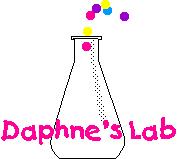
OBSERVE - HYPOTHESIZE - TEST.
This is the experimental method. It is objective. A scientist does not decide how things should be, but observes how things are. It is a controlled experiment. Scientific method strongly emphasizes empiricism and rationalism.
A Controlled Experiment contains the following types of variables:
Manipulated Variable
This is the variable you will change in your experiment.
Responding Variable
This is the variable that changes as a result of the alterations in the manipulated variable. This change is one that can be measured, and it is this measurement that leads to the results of the experiment and eventually to an answer to the experiment question.
Controlled Variables
These are all the variables and conditions that one attempts to keep the same in your experiment. If more than one variable changes in an experiment, it usuallynot possible to tell which changed caused the result.
It is also necessary in a controlled experiment that the variables be measurable. Although measurements will be of time, distance, height, and so on, other valid results might be more observational (e.g., changes in color).
1. PRELIMINARY RESEARCH
Because this will help you understand and predict what will happen during your experiment, even young students should do at least some research.
A few suggestions for resources:
| Encyclopedias | The Internet |
| Recent books | National Geographic |
| Scientific journal articles | |
| People: Contact companies who do research in your field and ask them to send information, or interview a scientist. | |
2. ASK A QUESTION
Ask a question based upon your research. Books or websites can give you
ideas, but be careful! Some may suggest science fair questions that are
really demonstrations. Ask a question where you can test your theory.
e.g What kind of ground cover will help prevent erosion? Be specific
in your question: e.g Will planting watercress on a small slope
prevent all erosion?
3. FORM A HYPOTHESIS
This is an educated guess (based on research) about what will happen as
a result of your experiment. Use the words you chose in your question
as the answering part of your hypothesis. e.g.Planting watercress on a
small slope will prevent all erosion.
4. DEVELOP A PROCEDURE & PERFORM
THE EXPERIMENT
Design your experiment and list of all the steps of your experiment in
a logbook. e.g Fill two plastic shoe boxes with the same amount
of potting soil. Place a brick under one end of each shoe box forming
a small slope. Place a grow light over the boxes. Plant watercress seeds
in one of the boxes. Water the planters with the same amount of water
each day, at the same time each day. Turn the grow light on (or put it
on a timer) at the same time every day.
5. COLLECT DATA
Perform your experiment, following your procedures precisely. It is important
that you repeat each test several times so that you can be sure of your
results. Enter all measurements into your logbook. Carefully observe what
happens at all times, and write down everything! Remember to record dates
and times accurately. e.g Day 1: Small amount of erosion occurs
in both planters as I watered them. ....Day 5 Watercress is beginning
to sprout, less erosion occurring in that planter.
6. RECORD RESULTS
When you perform your experiment, take multiple measurements. Organize
all results in your logbook into charts or tables. Make preliminary graphs.
If you don't find any trends, you may need to collect more data, or you
may need to analyze it differently. Check your logbook if you notice any
outlying points. You should do your best to explain wacky data. e.g.
In planter 1 the water follows the same path every day causing erosion.
In planter 2 when the new plants started to grow the water flowed around
where they were growing....
7. ANALYZE THE RESULTS
Why do you think you got the results you did? e.g. I believe erosion occurred
in planter 2 because the plants were sparsely planted.
8. MAKE CONCLUSIONS
Was your hypothesis correct? (Discovering that your hypothesis was incorrect
does not mean that the experiment was a failure!) What is likely to happen
if someone else does this experiment? How do your results affect real
life? How could you improve the experiment if you were to do it again?
e.g Though the watercress grew thick on the slope, there was
still a small amount of erosion where the plants did not grow. So I conclude
that planting watercress on a small slope will not prevent all erosion,
but it does prevent most erosion.
